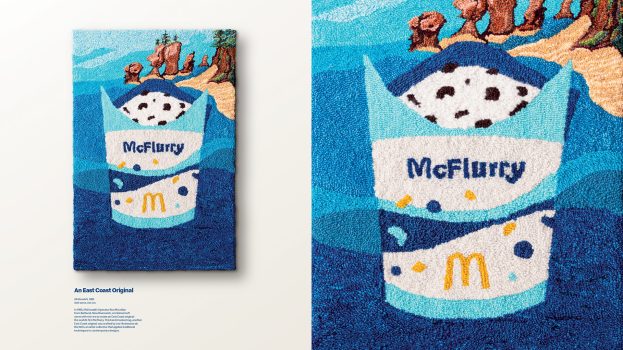The Oscar Mayer Wienermobile still turns heads, and the Hershey’s Kissmobile still gets waves – but lately some marketers have shifted the brands-on-wheels concept into overdrive.
Rather than hoping to convey the fun and excitement in a single glance, companies such as Microsoft Xbox, Columbia TriStar and YTV are going interactive, combining a traveling brandmobile with video displays, games, merchandise sales and street teams.
‘It’s fairly effective because it’s unique,’ says Jeff Spriet, president of Toronto-based branded entertainment company chokolat. ‘If everybody started doing it, then maybe it would start to become run-of-the-mill and wouldn’t get the notice it does now.’
Jam Van, for instance, is a Toronto-based integrated marketing company that enables music labels, film studios and others to take their properties on the road, where consumers can engage with them directly.
The company provides a music store on wheels, traveling to various concerts and events to promote films and music artists. Working with clients as diverse as Sony Music, Columbia TriStar and Pepsi, Jam Van travels across Ontario to targeted locations, using on-board staff and promotional techniques that include sampling and built-in billboard advertising. It all depends on the campaign, explains Lisa Barrans, director of marketing.
To promote the latest CD by De La Soul, Jam Van parked its vehicle outside the hip hop troupe’s concert venue in downtown Toronto. Inside the van, they had the latest De La Soul CD available for sale, along with other related hip hop and R&B artists. Listening stations were set up, along with screens that played the artists’ videos, and the staff on-board was at the ready to field questions and offer subtle plugs if necessary.
‘It takes the customer from the ad to the purchase,’ says Barrans. But even if they don’t land the sale, simply getting the customer on board can be enough to create that initial impression, leading to a sale later on. ‘The important thing is driving around hitting events, and hitting the places where the customer goes.’
Whether the customer buys the album from Jam Van or from HMV, Barrans says their marketing push has been effective. They gauge results by how many CDs are sold within the vehicle, but also by how well a certain artist is selling in an area that Jam Van has patronized. Barrans says they’ve seen CD sales increase for an artist by 15% to 20% in areas where they have promoted.
They do movies too: Barrans says her company’s campaign last summer for Columbia TriStar to promote the Vin Diesel film XXX proved effective, adding that ‘the client was extremely pleased.’ The guerrilla team hit up the summer fun spots like Wasaga Beach, Ont. and the Molson Indy, handing out T-shirts and XXX tattoos. The movie was number one for several weeks, doing especially well in the Toronto area, explains Barrans. Jam Van also garnered additional business with the client and will be doing another promotional campaign around another upcoming film.
With a daily run setting clients back $150 and a month-long push costing about $3,000, Jam Van isn’t an expensive extra when it comes to touting new films or CDs. Barrans says the campaigns work especially well with the 15- to 29-year-old demo, but she doesn’t rule out the notion of targeting other groups as well. She encourages trade show clients to consider using Jam Van as a more spirited trade booth.
‘We have the team to make it more interesting and interactive,’ says Barrans. ‘We’ve found we can reach any market we set our sights to.’
Others have a more permanent investment in the interactive brands-on-wheels concept. For two years now, Xbox has been touring its gaming console across Canada with its One bus.
Tracy Chong, Xbox Canada communications architect, says that the travelling brand allows direct, experiential contact with not only the game console, but also newly launched games. This ‘travelling gaming arcade’ has gone to events as varied as concerts, retail locations and university campuses, says Chong, since their target group of 12- to 29-year-olds tends to have a diverse set of interests.
Fitted with gaming systems enhanced by Dolby digital sound and manned by avid gamers, the Xbox One bus creates a ‘powerful sight-and-sound experience.’ Chong says the actual hands-on interaction helps to make it more accessible to consumers, as does the social aspect of the Xbox One staff. Team members – complete with plasma screens attached to their heads – invite people on board to play the games. Player tournaments and contests are also organized.
‘The human side reinforces the exhilaration factor,’ says Chong. ‘The people we hire to manage these events are quite edgy and approachable. They’re so incredibly passionate that you can’t help but be excited.’
Chong says about 500,000 people have been exposed to Xbox One since its inception, with about 40% of those actually engaged in playing the gaming systems. There is no cost to gamers, and there’s no fee for inviting Xbox One to attend an event.
Though there are currently no sales results to show whether experiencing Xbox One spurs the purchase of the game console, Chong says they are looking into purchase tracking and onsite research methods to gauge effectiveness. ‘When people are exposed to our trial events, the conversion factor does tend to increase,’ says Chong. ‘We’ll be looking at some new ways to accurately measure conversion and the impact on sales.’
To put the YTV brand top of mind with its target audience of young ‘uns, the Toronto-based kid network created the Weird on Wheels vehicle back in 1997. Weird on Wheels is inhabited by a 12-foot purple creature called Oooze, which has huge eyeballs that move and inflatable tentacles. WoW has a small stage with an awning above. Explains Tim Cormick, director of client marketing for owner Corus TV Entertainment, it’s a ‘portable event’ that ‘imparts the personality of the station.’
Each summer, Weird on Wheels is experienced by over 300,000 kids at venues including Toronto’s Canadian National Exhibition and Ontario Place, as well as the Vancouver Aquarium. University students, masquerading as the ‘Oooze Crooo,’ interact with children and host games and activities throughout the day where Weird on Wheels is parked. Cormick says kids even request their favourite Crooo member at events. ‘We receive significant [amounts of] e-mail,’ says Cormick, ‘And we get a lot of requests [from kids] to come to their city.’
Even those who aren’t physically at one of the live venues can experience the Oooze: YTV runs live segments directly from the event and incorporates interactive games on the net’s Web site. Additionally, a TV spot runs on YTV that tells kids where WoW will be.
Weird on Wheels also garners sponsors that are relevant to YTV’s target demo of six- to 11-year-olds. Co-marketing initiatives have included the Beyblade Battle Zone, sponsored by Hasbro, where skilled Beybladers are pitted against one another, and the Quench Quest trivia game sponsored by Minute Maid’s Bibo brand of fruit juice. Prizes related to the sponsors, such as Beyblade launchers, are given away to children to increase the value of the Weird on Wheels participation. ‘It works on many levels,’ says Cormick. ‘It supports the YTV brand and supports our relationship with key advertisers.’
Tania Koster, for one, is an ardent supporter of interaction when marketing to youth. As CD of Toronto’s Ground Control Marketing, she says the idea behind Xbox One – providing gaming systems at events – is ‘an obvious sell’ since kids are likely to try it out.
‘If you go beyond just a booth with a logo and banners, you’re going to reach a wider audience,’ she says. ‘You’ll have brand awareness right off the top.’























